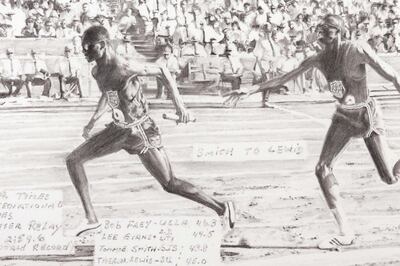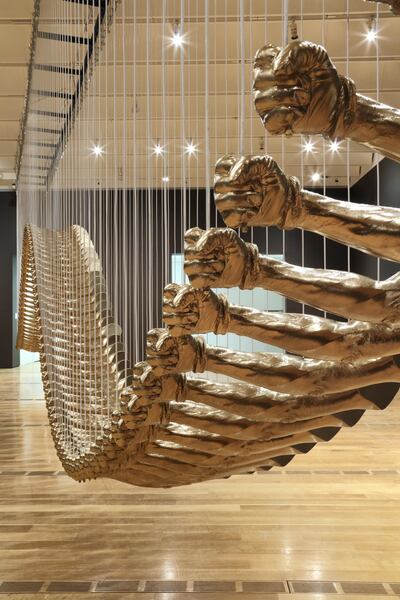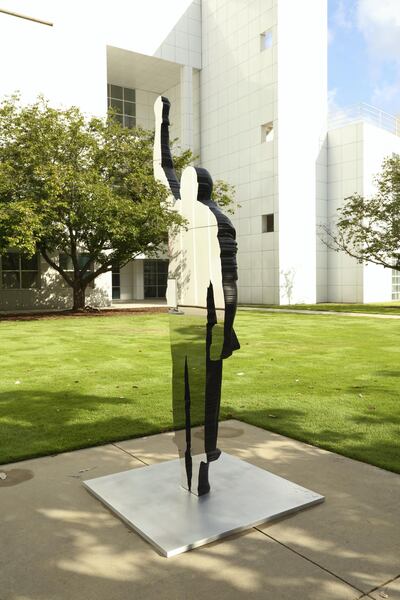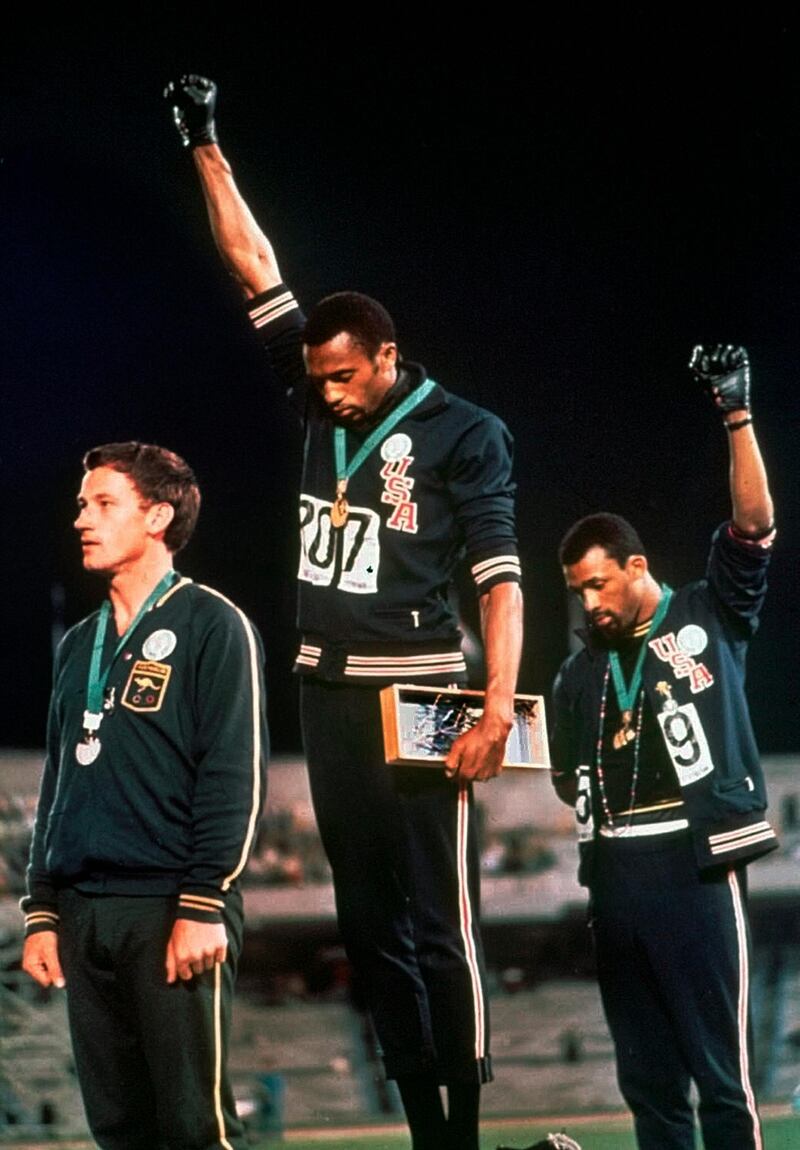Fifty years ago this month, Tommie Smith and John Carlos stood on the winner’s podium at the 1968 Olympic Games in Mexico and raised their black-gloved fists to the sky.
Their Black Power protest about racial injustice became one of the most memorable moments in 20th-century sport, but the price for both men was high.
Their athletic careers were ended by the United States Olympic authorities and they spent years in the sporting wilderness before finally getting the recognition they deserved.
A new exhibition about Smith seeks to look beyond that 1968 image of him on the podium after it was given new life by recent protests in the US by former NFL quarterback Colin Kaepernick. With Drawn Arms: Glenn Kaino and Tommie Smith, which is on show at the High Museum of Art in Atlanta, Georgia, is a collaboration between the former athlete and Kaino, a conceptual artist from Los Angeles.

Kaino tells The National that he wanted to help Smith, now 74, to "become a witness" to what he did for the first time in his life, and to help others see him with new eyes. "A 90-second gesture that Tommie made when he was a young man flattened him into a symbol that has been used in the world," Kaino says.
“What we’re doing is redimensioning him to create a consideration that when people understand the notion of protest and sacrifice they have a more nuanced and rich view of what it actually takes to create these moments of social change.”
Kaino, who has collaborated with weavers, biologists and cartographers on previous projects, began working with Smith in 2013 because of his long-standing interest in social change. "The biggest inspirations for creating the work was this notion of how to connect Tommie's legacy in a new way with a contemporary audience and make sure his moment has the capacity to be interpreted in something that was very impactful," he explains.
The centrepiece of the exhibition is Bridge, which took 18 months to assemble and resembles a giant sine wave hanging from the ceiling. Kaino took a cast of the arm Smith held up in protest and fashioned it into a gold-coloured fibreglass arm that he duplicated 200 times. Each of the arms was hung from the ceiling by a wire; the 200-metre length representing Smith winning the 200-metre sprint.

Another of the exhibits is a sculpture called Invisible Man, a life-size likeness of Smith with his fist raised on one side and a mirror on the other. "Invisible Man is a layered piece, a critique of the notion of monumentality or something that is created to last generations," Kaino says. "When the viewer walks around it, it disappears, it creates a moment of ephemerality. Also people stare at themselves in the shadow of Tommie Smith."

In With Drawn Arms, there are also mementos from Smith's career and reproductions of the cover of Newsweek magazine from July 1968 with the headline "Angry Black Athlete", which Kaino defaced with his hands during the reprinting process. Kaino says that he saw the act as a "powerful indictment of headline-writing" and wanted viewers to ask how the context is changed when certain words are removed.
The exhibition has context about what happened to Smith and Carlos, who immediately after their protest were forced to leave the Olympic Village and suspended by the US Olympic Committee, which sent them home and effectively ended their careers. At the time, Smith, 24, had several world records, while Carlos, 23, had a bright future ahead of him. The media came out against them – Brent Musburger from the Chicago American newspaper wrote that they looked like "a couple of black-skinned storm troopers".
Smith's marriage fell apart, while Carlos's first wife committed suicide and he struggled with drug abuse. They both worked as athletics coaches for decades and have only recently received the acclaim they deserve after protests by Kaepernick, who "took a knee" during the national anthem in 2016 while playing for the San Francisco 49ers. Kaepernick's protest against the oppression of African Americans sparked a national conversation in the US and drew president Donald Trump's ire.
Kaino recently arranged a meeting between Smith and Kaepernick, and posted a photo on social media calling them “two icons fighting for equality, separated by 50 years, but not separated at all”.
“The most important takeaway regarding Colin is the idea that icons have an entire history and complications behind them,” Kaino says.
“Who is Colin Kaepernick? Who are these next protesters? It is not just what it seems, it is not just the knee, it is not just the salute. And hopefully, it makes them curious to dig in and understand more.”
With Drawn Arms: Glenn Kaino and Tommie Smith is on show at the High Museum of Art in Atlanta until February 3. For more information, go to www.high.org
__________________________
Read more:
Exploring how the Arab world ‘is the origin of so much we take for granted in the West’
British Museum's new gallery shows the influence of Islam in the Middle East and beyond
Louvre Abu Dhabi’s dynamic mission is shared at the Frankfurt Book Fair
__________________________





